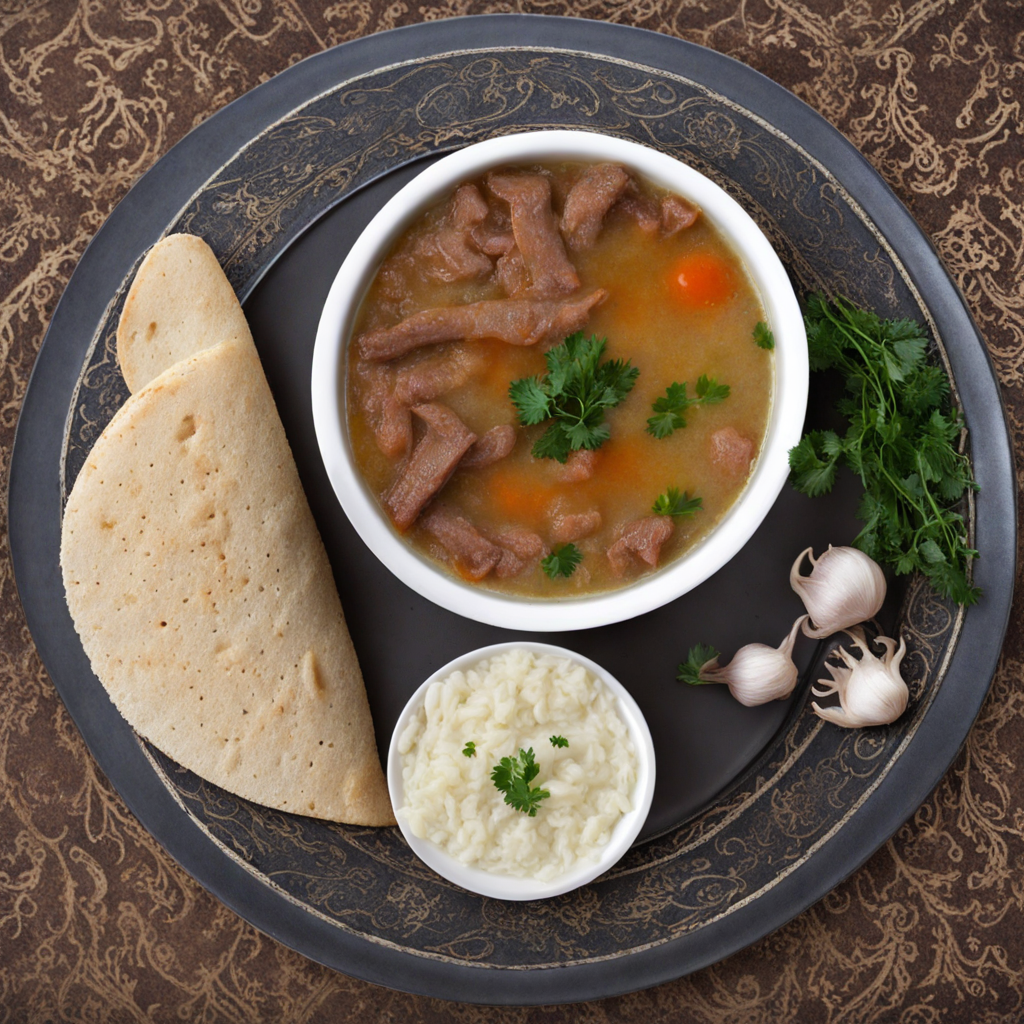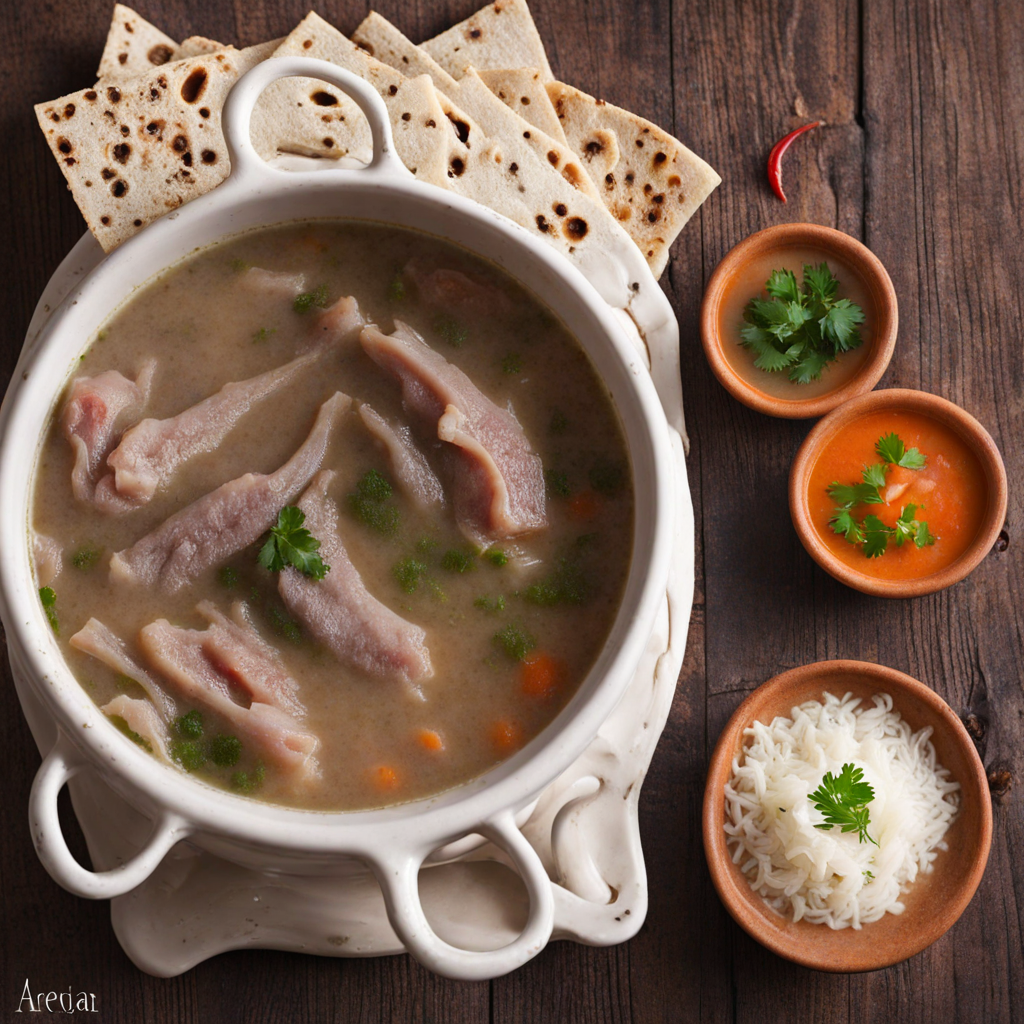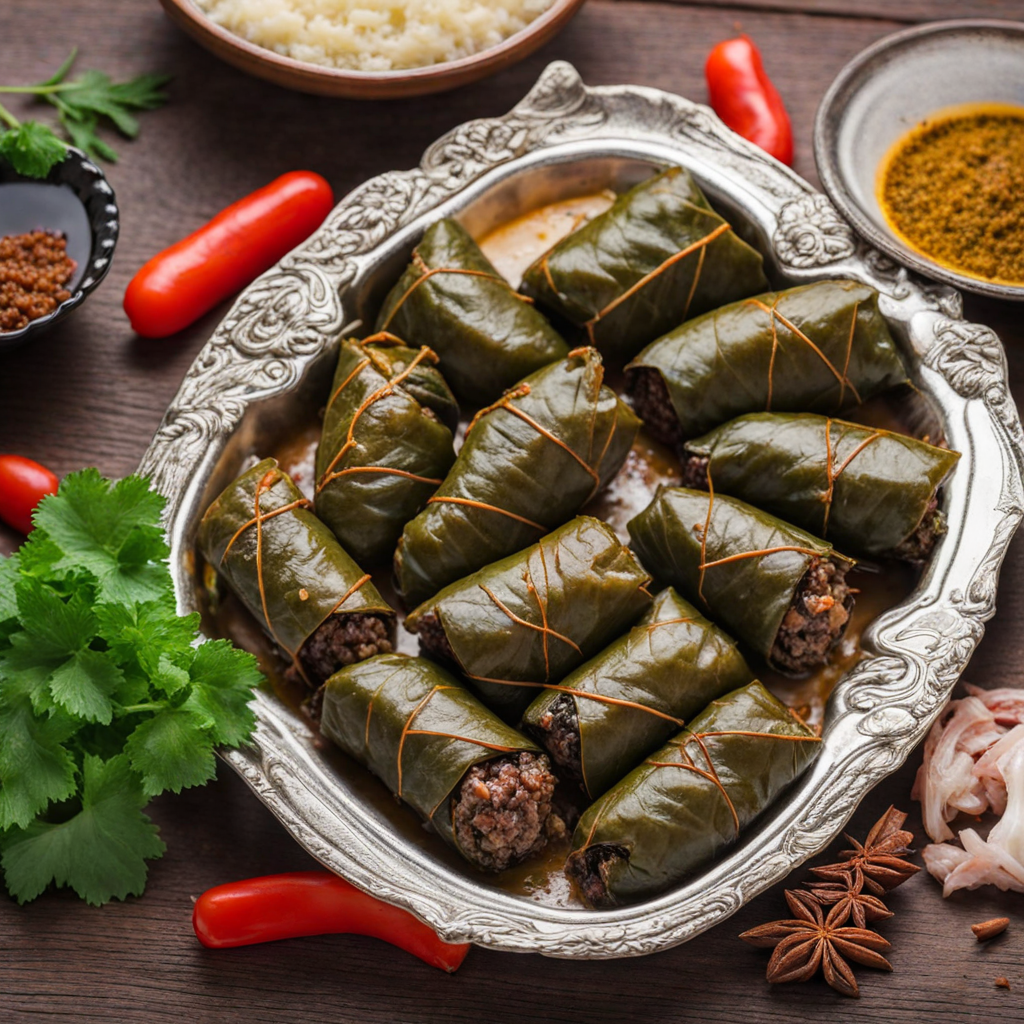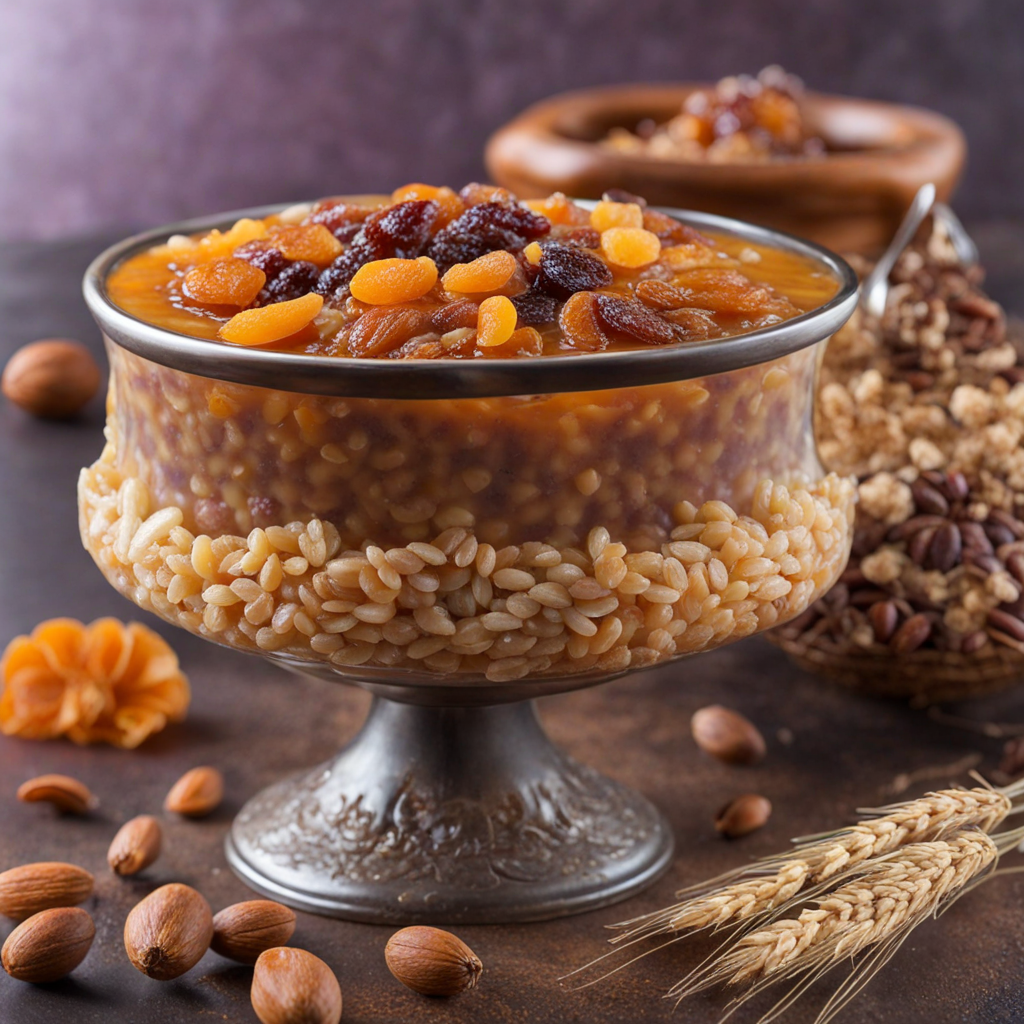Khash
Khach, or "Խաշ" in Armenian, is a traditional Armenian dish that is particularly cherished for its rich flavors and hearty nature. This dish is essentially a type of soup made primarily from boiled cow's feet, which impart a unique gelatinous texture to the broth. Khach is not merely a meal; it is often associated with cultural rituals and gatherings, symbolizing hospitality and warmth in Armenian life. The history of khash dates back to ancient times, often linked to the practices of rural communities. Traditionally, khash was prepared during the winter months, especially in the colder regions of Armenia, where the consumption of such a hearty dish was essential for warmth and sustenance. Its preparation is often a communal activity, bringing families and friends together, especially during festive occasions and holidays. The dish is also traditionally enjoyed in the early morning, sometimes after celebrating an all-night gathering, acting as a restorative meal that helps revive spirits. The flavor profile of khash is deeply savory, enriched by the natural broth created from the slow cooking of the animal’s feet. The cooking process allows the collagen in the bones to dissolve, creating a thick, flavorful liquid that is both nourishing and filling. The addition of garlic and salt enhances the natural flavors, providing a rustic, robust taste that is comforting and satisfying. Often, a squeeze of lemon is added just before consumption, which brightens the dish and balances its richness. Preparation of khash is an art form that requires patience and time. The process begins
How It Became This Dish
Origin of Khash Khash, a traditional Armenian dish, boasts a rich history that stretches back centuries. It is believed to have originated in the mountainous regions of Armenia, where the harsh winters necessitated hearty and nourishing foods. This dish primarily consists of boiled cow or sheep parts, particularly the legs and head, simmered for long hours to create a gelatinous broth. The origins of khash are deeply rooted in the pastoral lifestyle of ancient Armenian clans, who relied on livestock for sustenance and survival. The preparation of khash would often begin at dawn, with the meat simmering for hours, filling the air with an enticing aroma that would provide comfort during the cold months. Historically, khash served not only as a meal but also as a means of sustenance for workers involved in labor-intensive tasks. It was a popular dish among farmers and laborers who required substantial energy to endure their rigorous days. The communal aspect of khash is significant; it is often enjoyed in large gatherings, where friends and family come together to share the meal, fostering a sense of community and togetherness. \n\n Cultural Significance In Armenian culture, khash transcends mere sustenance; it represents a culinary tradition that embodies the spirit of hospitality and camaraderie. The dish is often associated with special occasions, particularly during the winter months or on significant feast days. Khash is also traditionally consumed during the first days of winter as a means to warm the body and soul, symbolizing the resilience of the Armenian people in the face of harsh climates. The preparation and consumption of khash are steeped in ritual. It is common to serve the dish with a variety of accompaniments, including garlic, vinegar, lavash (Armenian flatbread), and radishes. Each component complements the rich and savory broth, enhancing the overall dining experience. Moreover, the act of dipping the bread into the broth is not merely a practical necessity but a cultural expression that connects individuals to their heritage and to one another. \n\n Development Over Time The evolution of khash reflects broader changes in Armenian society and culinary practices. In the early 20th century, khash became a symbol of national identity, especially during times of adversity. The Armenian Genocide of 1915 and subsequent diaspora led to a heightened emphasis on preserving culinary traditions as a means of cultural survival. Khash, like other traditional dishes, became a way for displaced Armenians to reconnect with their roots, and its preparation often included stories of home and heritage passed down through generations. In the late 20th century and early 21st century, khash began to gain recognition beyond Armenian borders. With the rise of interest in ethnic cuisines and the globalization of food culture, khash has found its way into various culinary circles, both in Armenia and in the Armenian diaspora. Restaurants and food festivals featuring khash have sprouted across major cities, celebrating the dish's rustic charm and historical significance. This exposure has invited adaptations of khash, with chefs experimenting with ingredients and presentation while remaining true to its essence. \n\n Modern Interpretations Today, khash continues to evolve, embracing modern culinary trends while remaining faithful to its roots. Some contemporary chefs incorporate innovative techniques such as sous-vide cooking to enhance the texture and flavor of the dish. Others experiment with variations, utilizing different cuts of meat or incorporating additional spices and herbs to create new flavor profiles. These modern interpretations are often showcased in upscale dining establishments, where khash is presented with an artistic flair, yet still retains the comforting qualities that have made it a beloved staple in Armenian homes. Despite these changes, the traditional method of preparing khash remains prevalent, especially during family gatherings and holiday celebrations. The communal aspect of the dish persists, with families often gathering around the table to enjoy khash together, reinforcing bonds and sharing stories. This continuity illustrates the dish's role as a vessel for cultural identity, allowing generations to connect through shared culinary experiences. \n\n Khash Beyond Armenia The influence of khash has extended beyond the borders of Armenia, finding a place in the culinary traditions of neighboring countries and within the wider Armenian diaspora. Variants of khash can be found in countries such as Turkey, Georgia, and Iran, where similar dishes are enjoyed with localized ingredients and cooking techniques. In these regions, khash-like dishes often serve similar purposes—providing warmth and nourishment during the colder months while fostering communal ties. In Armenian communities worldwide, khash is celebrated during the winter months, especially during the festive season. Special khash gatherings, known as "khash parties," are organized where friends and family come together to enjoy the dish in a festive atmosphere. These events often include traditional music, dancing, and storytelling, reinforcing the cultural significance of khash as more than just a meal, but a celebration of Armenian heritage. \n\n Conclusion on Khash's Legacy As the world continues to embrace diverse culinary traditions, khash stands as a testament to the resilience and richness of Armenian culture. Its journey from a rustic, labor-intensive dish to a symbol of communal bonding and identity reflects the ongoing narrative of Armenian history. The traditions surrounding khash, from its preparation to its consumption, serve as a reminder of the importance of food in cultural expression and community building. Whether enjoyed in a humble home or an upscale restaurant, khash remains a cherished dish that continues to bring people together, nourishing both body and spirit.
You may like
Discover local flavors from Armenia







